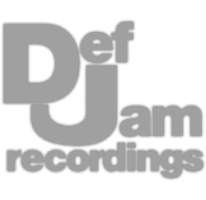Professional Analog Mastering.
Professional Analog Mastering.










When mixing music, it’s best to use a sampling rate of 48kHz or higher, and route your signal into busses. From that point, use subtractive eq, compress and saturate, introduce temporal effects like reverb to the busses, finalize levels, and then export multiple versions by soloing your busses.
When mixing, ideally you can use the same sampling rate that was used with the session was recorded - for example, if the session was recorded at 96kHz, you’d choose the same. Unfortunately, it may be too difficult for your computer to handle this sampling rate and all of the processing.
If this is the case, 48kHz is the minimum you should use.
When I mix I like to color code groups of similar instruments like drums, guitars, etc, and set the output of these grouped instruments to busses. The output of these busses is the main output - this lets me affect all instruments in a group, mute them if needed, and more.
I’ll label all of the auxiliary tracks accordingly, and color code these as well. Then I’ll make some pans and get a general feel for the level with the faders.
The next thing I want to do is make competing tracks have some separation - my favorite way to do this is with inverse EQ. We’ll explain this in detail in another video next week, but in short, you match the two competing signals and then invert the band’s gain.
This works well for kick and bass. Additionally, I’m going to remove any aspects of the other track’s frequencies that I don’t enjoy or don’t want to amplify - I’ll use subtractive EQ for this.
I’ll tag an older video in the description which details how to set up inverse equalization.
Next, I want to control my dynamics and add some harmonic distortion. I may use compression and separately, or just use saturation to perform both forms of processing - this depends on the instrument. For something like a background synth, only saturation is typically fine, but for vocals more is needed.
For this reason, I’ll combine compression and saturation on my more important instruments.
At this point let’s talk about one of the biggest problems when mixing - conflicting processing. In short, when we overprocess a signal, we’re often using multiple effects that are having the opposite or conflicting effects, in turn causing more processing to remedy the issue - which just exacerbates the problem.
I typically find that less is more, and it definitely helps to know how a processor affects the frequency response, harmonic content, stereo image, and other aspects of the sound before using it.
After we’ve paid some attention to our individual tracks, let’s affect the busses with whatever processing is needed - but avoid adding temporal effects like delay or reverb just yet. So maybe some collective saturation or analog emulation, or maybe mid-side equalization to affect the response and image.
Here is where you can glue groups together more and create a sense of uniformity amongst the instrumentation.
I like to create temporal effects from my instrument groups - I’ll use busses from these auxiliary tracks and place the reverb or delay on these new auxiliary tracks. I’ll set the send to unity, decide on the reverb or delay settings, and then blend these in using the channel fader.
This way my temporal effects affect the groups of instruments - creating a more cohesive sound. It’s best to send each group to its own reverb or delay send, for reasons I’ll explain in a minute.
Now is a great time to automate some of the effects to get a more unique sound - for example, maybe I’ll automate the vocal bus’s delay in one section, or drive saturation on an individual instrument for a cool effect. Now all my processing is done.
At this point, I’ll reassess the levels and adjust some individual tracks, and then finally the level of the busses until I get the exact balance I want.
Lastly, I’ll export my mix - what’s great about this setup is that I can solo each instrument bus and export a send, or maybe create a drumless version, etc. Additionally, we didn’t use any processing on the mix bus, and we gave each bus its own reverb or delay send.
What this means is that when we solo each bus and its sends, the processing is exactly the same as it was when playing the full mix.
If say we had used a compressor on the mix bus, this compressor would behave differently when processing the full mix versus just one bus.
Because we processed everything the way we did, any bus stems stay true to the full mix and can be recombined to perfectly recreate the full mix.